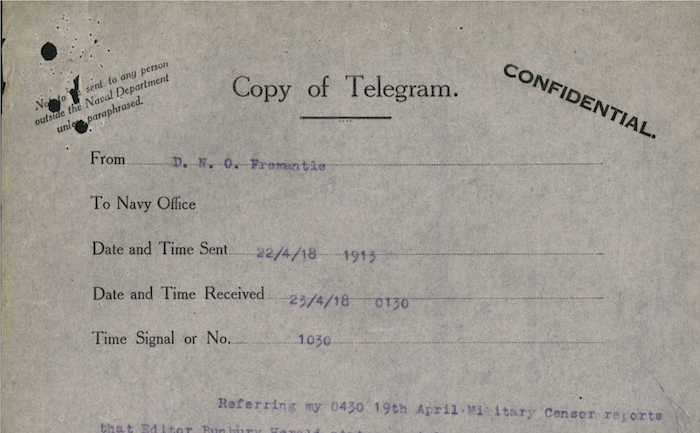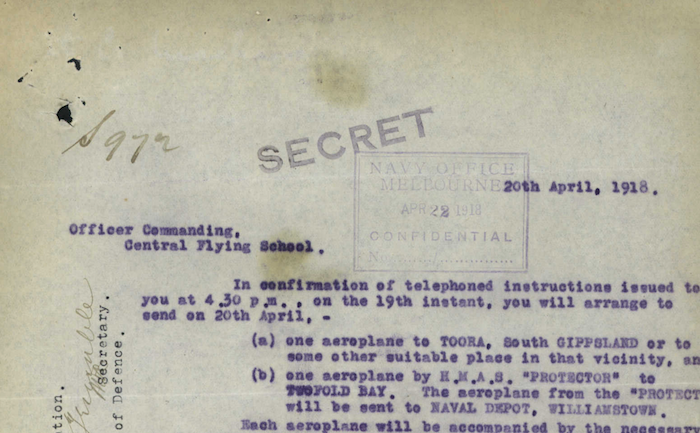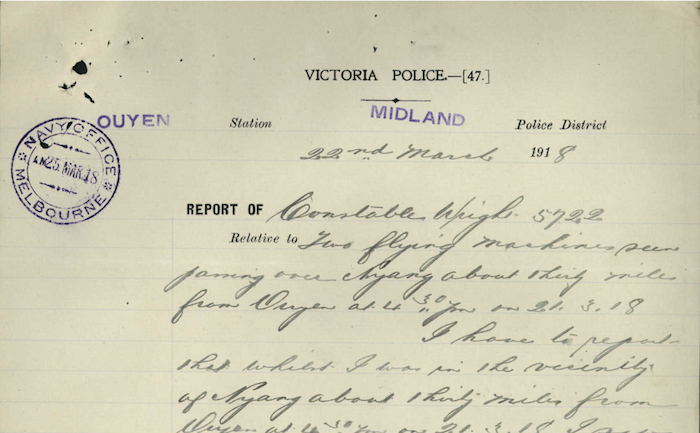Monday, 22 April 1918
NAA: MP1049/1, 1918/066, page 403 is a copy of a telegram from the District Naval Officer (DNO), Fremantle, Western Australia. He is passing on information from the editor of the Bunbury Herald (by way of the military censor) that at Bunbury a girl reports having seen a balloon or zeppelin at 2200 21st April in […]











